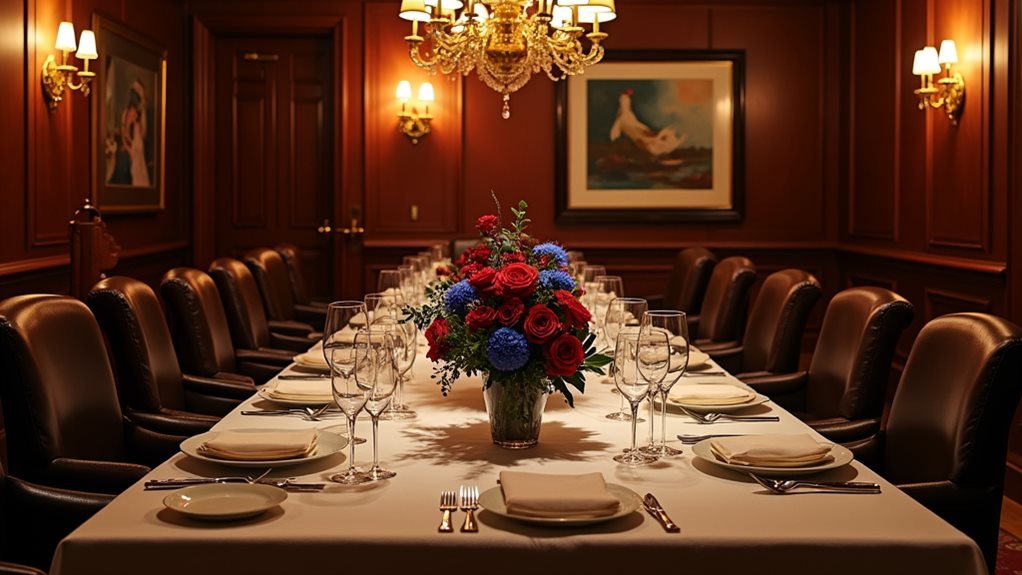AirDrop transforms Apple users' daily routines with lightning-fast file sharing across devices. The technology combines Wi-Fi and Bluetooth, creating secure connections within a 30-foot radius – perfect for both boardrooms and coffee shops. Large files? No problem. Photos, documents, and media zip between devices with a simple swipe or click. While solid walls might occasionally block signals, and network hiccups happen, AirDrop's seamless integration makes digital sharing feel like magic in 2025. The real power lies in understanding its full capabilities.

Nearly every Apple user has experienced that magical moment when files zip through the air between devices. It's 2025, and AirDrop remains one of Apple's most brilliantly simple features – because who wants to mess with cables anymore? The technology uses a clever combination of Wi-Fi and Bluetooth, creating a direct link between devices that's both secure and lightning-fast.
Let's be real: sharing files shouldn't be rocket science. AirDrop gets this right by operating within a 30-foot radius, perfect for most offices, homes, or that awkward moment when you need to send photos to someone you just met. The system encrypts everything with TLS encryption, so those embarrassing selfies won't end up in the wrong hands. Unless, of course, you accidentally hit "Everyone" instead of "Contacts Only" in your settings. While Apple may be behind in AI, their file-sharing capabilities remain industry-leading. Most items sent through AirDrop conveniently save in the app they originate from.
The beauty of AirDrop lies in its versatility. Whether you're working on a MacBook or fumbling with an iPhone, the process remains seamlessly integrated across Apple's ecosystem. Drop a file into the Finder window on your Mac, or swipe up on your iOS device – boom, you're ready to share. No size limits officially exist, though trying to send your entire photo library might test your patience and the technology's limits.
Privacy concerns? Sure, they exist. The initial handshake between devices can expose some user information if compromised, and open-source alternatives like OWL and OpenDrop have emerged for the particularly paranoid. But for most users, the benefits far outweigh the risks. The system automatically saves transfers between devices using the same Apple Account, making life considerably easier for those juggling multiple devices.
Some limitations still exist in 2025. Solid walls can be AirDrop's kryptonite, and large file transfers occasionally fail spectacularly. You'll need devices to stay within range during transfers, or you'll end up starting over – a fact that's caused more than one frustrated user to contemplate throwing their device across the room.
Despite these minor hiccups, AirDrop continues to streamline collaboration and personal file sharing in ways that seemed impossible just a decade ago. From sending work documents to sharing vacation photos, the technology has become an indispensable part of the Apple ecosystem.
It's not perfect, but it's pretty darn close. And in a world where simplicity matters, that's exactly what most users need.
Frequently Asked Questions
Can Air Drop Work Between Apple Devices and Other Operating Systems?
AirDrop is strictly an Apple-only party. It flat-out won't work with Android, Windows, or any other non-Apple devices – period.
That's just how Apple rolls. The technology uses a proprietary mix of Bluetooth and Wi-Fi that's locked down tighter than Fort Knox.
While there are plenty of alternative file-sharing methods out there (think email, cloud services, or messaging apps), AirDrop's seamless convenience remains exclusively in Apple's walled garden.
What Happens if Someone Declines My Air Drop Request Repeatedly?
When someone repeatedly declines AirDrop requests, it's usually not personal – just technical hiccups getting in the way.
Common culprits? Their device might be in Do Not Disturb mode, storage could be maxed out, or they're dealing with connectivity issues.
Sometimes it's as simple as their AirDrop settings being set to "Contacts Only."
Hey, at least there's always email. Or, you know, actually talking to them about it.
Is There a Limit to How Many Files I Can Air Drop?
While Apple hasn't posted a big "DO NOT EXCEED" sign, there are some real-world limits to AirDrop.
Testing shows you can send about 512 files at once – that's the sweet spot. Beyond that? Things get dicey.
Large transfers might fail or slow to a crawl. Distance between devices, network conditions, and device performance all play a role.
Bottom line: AirDrop works best for small to medium-sized batches of files.
Does Air Drop Compress Video Files During Transfer?
No, AirDrop doesn't compress video files during transfer.
It's pretty straightforward – what you send is what you get. The system uses Wi-Fi and Bluetooth to maintain original file quality, no sneaky compression happening behind the scenes.
Sure, file conversion might occur for compatibility reasons, but that's different from compression.
While users can manually compress files before sending them, AirDrop itself keeps hands off the quality.
Simple as that.
Can I Track Who Has Received My Air Dropped Files?
Users cannot natively track who receives their AirDropped files – it's a bit of a black hole that way.
iOS doesn't maintain any transaction history or delivery confirmations. Once that file whooshes through the digital ether, it's gone without a trace.
The only confirmation? That brief "Sent" notification that pops up.
Pretty basic for such advanced tech, right? Security-minded folks might actually prefer this built-in anonymity.









